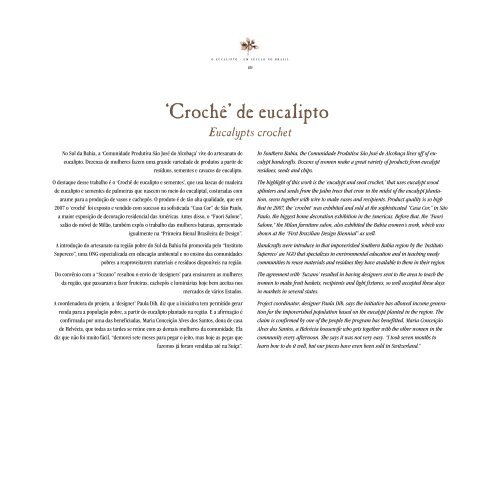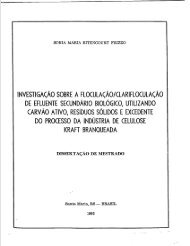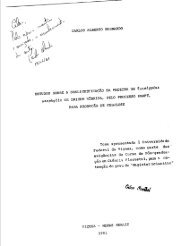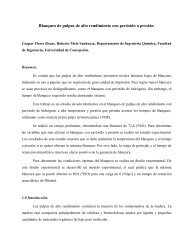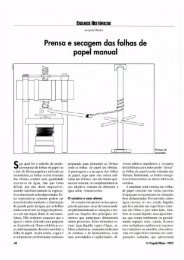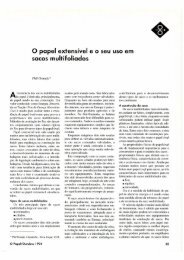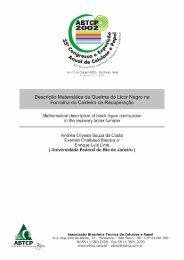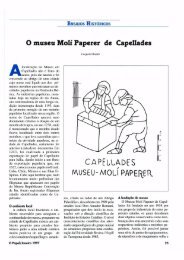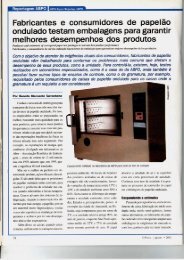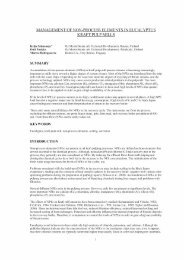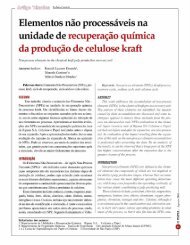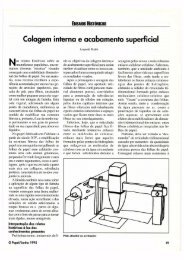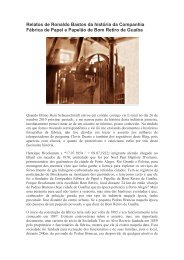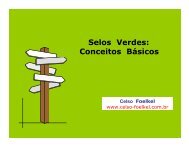O Eucalipto: um século no Brasil (The Eucalypt - Celso Foelkel
O Eucalipto: um século no Brasil (The Eucalypt - Celso Foelkel
O Eucalipto: um século no Brasil (The Eucalypt - Celso Foelkel
You also want an ePaper? Increase the reach of your titles
YUMPU automatically turns print PDFs into web optimized ePapers that Google loves.
No Sul da Bahia, a ‘Comunidade Produtiva São José do Alcobaça’ vive do artesanato de<br />
eucalipto. Dezenas de mulheres fazem <strong>um</strong>a grande variedade de produtos a partir de<br />
resíduos, sementes e cavacos de eucalipto.<br />
O destaque desse trabalho é o ‘Crochê de eucalipto e sementes’, que usa lascas de madeira<br />
de eucalipto e sementes de palmeiras que nascem <strong>no</strong> meio do eucaliptal, costuradas com<br />
arame para a produção de vasos e cachepôs. O produto é de tão alta qualidade, que em<br />
2007 o ‘crochê’ foi exposto e vendido com sucesso na sofisticada “Casa Cor” de São Paulo,<br />
a maior exposição de decoração residencial das Américas. Antes disso, o “Fuori Salone”,<br />
salão do móvel de Milão, também expôs o trabalho das mulheres baianas, apresentado<br />
igualmente na “Primeira Bienal <strong>Brasil</strong>eira de Design”.<br />
A introdução do artesanato na região pobre do Sul da Bahia foi promovida pelo “Instituto<br />
Supereco”, <strong>um</strong>a ONG especializada em educação ambiental e <strong>no</strong> ensi<strong>no</strong> das comunidades<br />
pobres a reaproveitarem materiais e resíduos disponíveis na região.<br />
Do convênio com a “Suza<strong>no</strong>” resultou o envio de ‘designers’ para ensinarem as mulheres<br />
da região, que passaram a fazer fruteiras, cachepôs e l<strong>um</strong>inárias hoje bem aceitas <strong>no</strong>s<br />
mercados de vários Estados.<br />
A coordenadora do projeto, a ‘designer’ Paula Dib, diz que a iniciativa tem permitido gerar<br />
renda para a população pobre, a partir do eucalipto plantado na região. E a afirmação é<br />
confirmada por <strong>um</strong>a das beneficiadas, Maria Conceição Alves dos Santos, dona de casa<br />
de Helvécia, que todas as tardes se reúne com as demais mulheres da comunidade. Ela<br />
diz que não foi muito fácil, “demorei sete meses para pegar o jeito, mas hoje as peças que<br />
fazemos já foram vendidas até na Suíça”.<br />
O E U C A L I P T O - U M S É C U L O N O B R A S I L<br />
116<br />
‘Crochê’ de eucalipto<br />
<strong>Eucalypt</strong>s crochet<br />
In Southern Bahia, the Comunidade Produtiva São José de Alcobaça lives off of eucalypt<br />
handcrafts. Dozens of women make a great variety of products from eucalypt<br />
residues, seeds and chips.<br />
<strong>The</strong> highlight of this work is the ‘eucalypt and seed crochet,’ that uses eucalypt wood<br />
splinters and seeds from the palm trees that crow in the midst of the eucalypt plantation,<br />
sewn together with wire to make vases and recipients. Product quality is so high<br />
that in 2007, the ‘crochet’ was exhibited and sold at the sophisticated “Casa Cor,” in São<br />
Paulo, the biggest home decoration exhibition in the Americas. Before that, the “Fuori<br />
Salone,” the Milan furniture salon, also exhibited the Bahia women’s work, which was<br />
shown at the “First Brazilian Design Biennial” as well.<br />
Handcrafts were introduce in that impoverished Southern Bahia region by the ‘Instituto<br />
Supereco’ an NGO that specializes in environmental education and in teaching needy<br />
communities to reuse materials and residues they have available to them in their region.<br />
<strong>The</strong> agreement with ‘Suza<strong>no</strong>’ resulted in having designers sent to the area to teach the<br />
women to make fruit baskets, recipients and light fixtures, so well accepted these days<br />
in markets in several states.<br />
Project coordinator, designer Paula Dib, says the initiative has allowed income generation<br />
for the impoverished population based on the eucalypt planted in the region. <strong>The</strong><br />
claim is confirmed by one of the people the program has benefitted, Maria Conceição<br />
Alves dos Santos, a Helvécia housewife who gets together with the other women in the<br />
community every after<strong>no</strong>on. She says it was <strong>no</strong>t very easy. “I took seven months to<br />
learn how to do it well, but our pieces have even been sold in Switzerland.”


